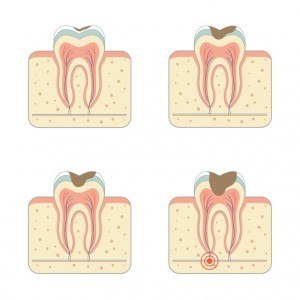Gentle Root Canal
Has your dentist or endodontist informed you that you need to have a root canal? Root canals are typically recommended when you have advanced decay or infection that extends to the inside (pulp, or nerve) of your tooth. It is important to watch for signs of infection that may require a root canal, as the infection can lead to further complications.
Indications that you may require a root canal include:
- Sensitivity to hot and cold that does not resolve
- A severe toothache
- Darkening of the enamel
- Swelling or tenderness in your gums
- A fractured tooth
- A visibly large cavity
If the tooth is damaged, Dr. Snyder performs an endodontic treatment on the affected tooth in order to avoid having the tooth removed later on.
The Root Canal Procedure
A root canal typically takes one or two office visits to complete. During your root canal, the damaged layer of enamel and dentin (the layer of tooth under the enamel) is removed. Then, the nerve tissues inside of the pulp chamber are removed as well. Dr. Snyder disinfects the nerve chamber and then seals it off to prevent bacteria from re-entering the tooth. The process is a relatively smooth one that results in very little discomfort. It allows us to preserve your tooth for several more years.
Root Canal Recovery
Once your root canal has been completed, Dr. Snyder will need to place a crown over the tooth. This will protect the tooth against additional fracture or wear to the brittle enamel.
If you have an abscessed tooth or your tooth is beginning to turn darker in color – call the office of Douglas J. Snyder, D.D.S today. We’ll help you save your tooth with a root canal so that you can keep on smiling!
If your gums need a little help, we offer the latest advancements in periodontal therapy, including Pinhole® Gum Surgery and Lunchtime Gum Lift.



